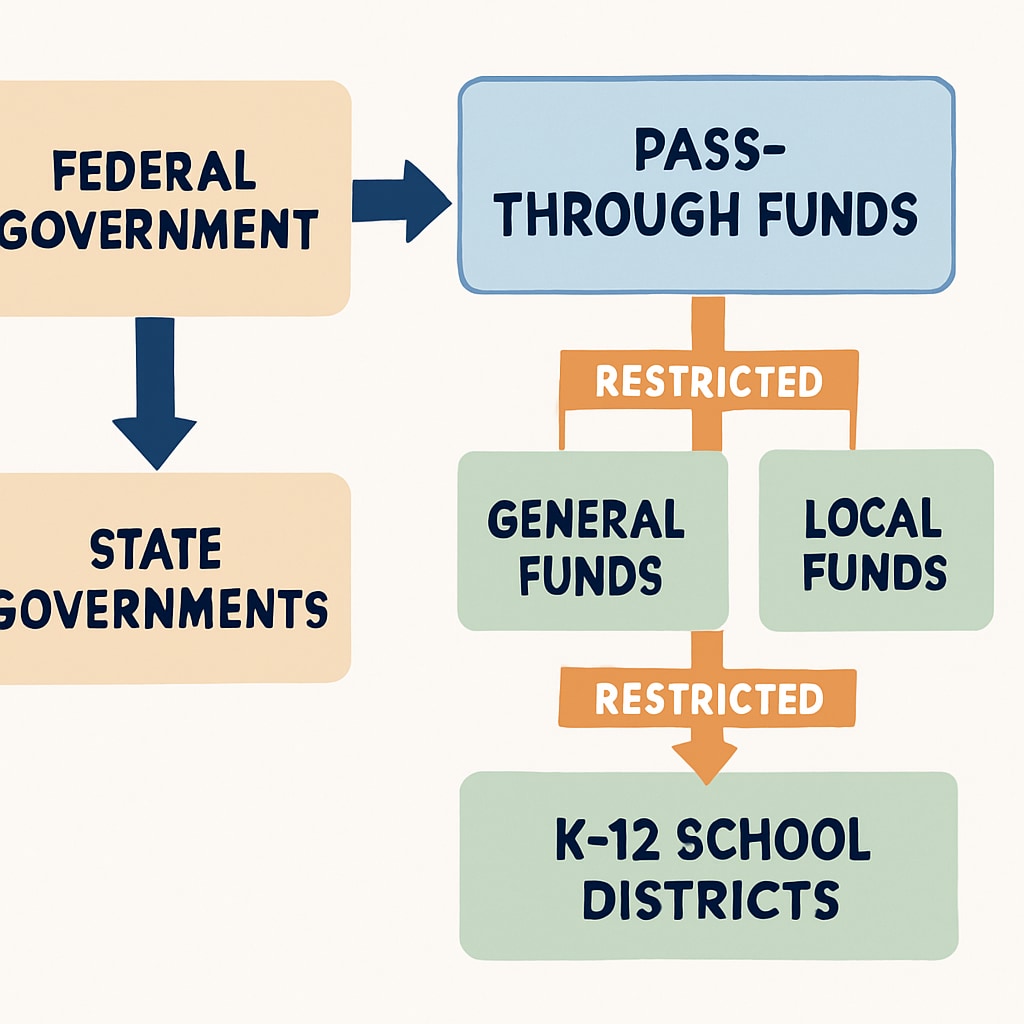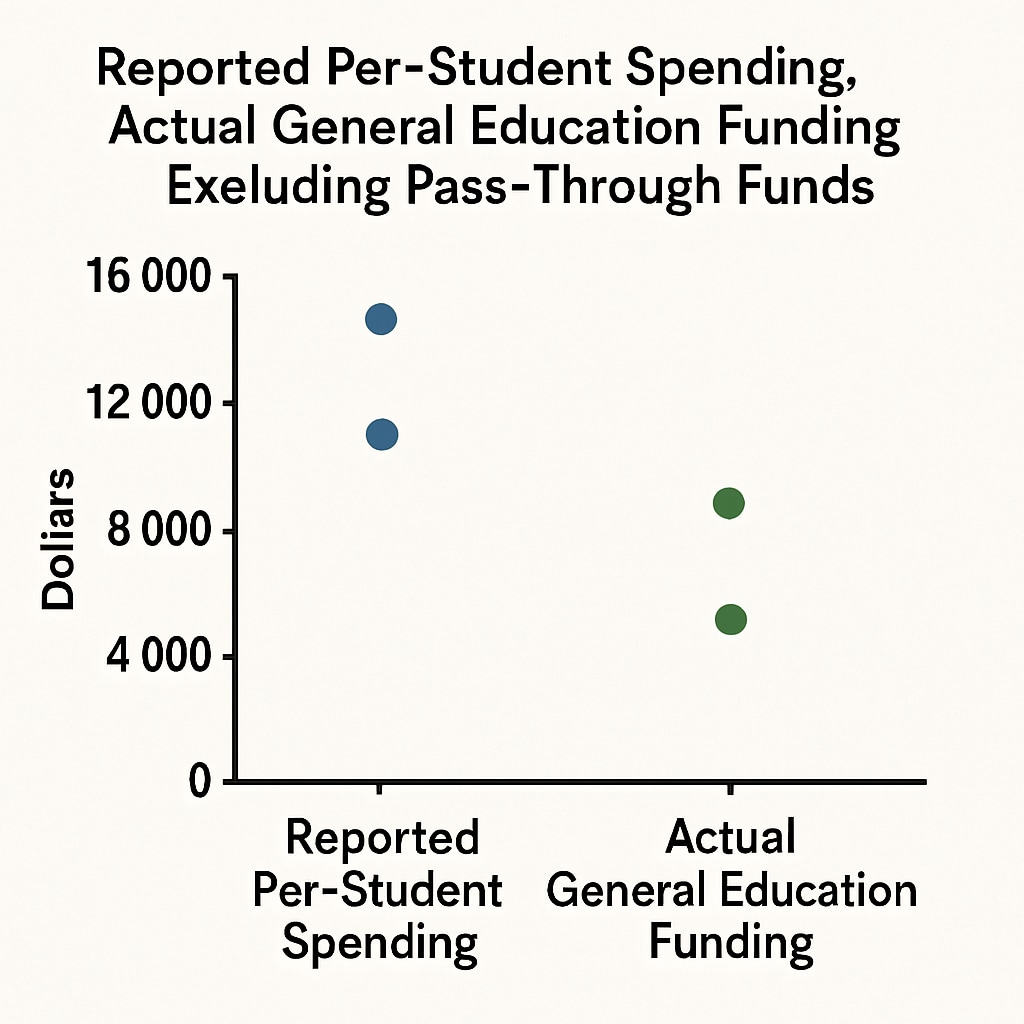In discussions about education financing, the terms “pass-through funds,” “per-student spending,” and “school budget” are often thrown around, but their implications are rarely fully understood. Pass-through funds, which are allocated to schools or districts but earmarked for specific programs or services, can significantly distort the statistics reported on per-student spending. This article delves into how this financial mechanism can inflate the perception of educational investment and calls for a more transparent approach to budgeting in K12 education.
What Are Pass-Through Funds and Why Do They Matter?
Pass-through funds are a financial arrangement where money flows through one entity, such as a school district, to another, often with restrictions on how it can be used. For example, federal grants for special education or Title I programs are often categorized as pass-through funds. While these funds are valuable for addressing specific needs, their inclusion in per-student spending calculations can be misleading.
The issue arises because pass-through funds are not necessarily reflective of the general resources available to all students. Instead, they are targeted at particular programs or demographics, such as low-income students or those with disabilities. As a result, their inclusion in overall spending statistics can give the impression of higher investment in education than what is actually accessible to the average student.

How Pass-Through Funds Distort Per-Student Spending Data
To understand the distortion caused by pass-through funds, consider this scenario: A district reports a per-student spending figure of $15,000. However, $3,000 of this amount comes from pass-through funds designated solely for special education programs. For students who do not benefit from these programs, the actual spending is closer to $12,000.
This discrepancy is not just an accounting issue—it has real-world implications. Policymakers, parents, and advocacy groups often rely on per-student spending data to make decisions about resource allocation, school quality, and funding reforms. Misleading figures can lead to misplaced priorities and inequitable distribution of resources.
According to a study by Britannica, transparency in education funding is crucial for addressing disparities. When pass-through funds are not clearly separated in reports, stakeholders may overestimate the funding available for general education purposes, potentially neglecting underfunded areas.

A Call for Transparency in School Budgets
To mitigate the distortion caused by pass-through funds, education stakeholders must prioritize transparency in school budget reporting. This can be achieved through the following measures:
- Separate Reporting: Clearly distinguish between general education funds and pass-through funds in financial reports.
- Contextualized Data: Provide additional context to per-student spending statistics, such as the proportion allocated to targeted programs versus general education.
- Stakeholder Education: Ensure that policymakers and the public understand the limitations of per-student spending figures.
For example, adopting standards similar to those recommended by the U.S. Department of Education could help create more accurate and equitable funding models. By increasing transparency, schools, districts, and governments can work together to ensure that resources are allocated in a way that truly benefits all students.
The Broader Implications for Education Equity
The misrepresentation of per-student spending due to pass-through funds not only affects financial transparency but also exacerbates broader issues of education equity. Schools serving disadvantaged communities are often the recipients of targeted funding, which can skew spending data and mask systemic underfunding in other areas. As a result, these schools may appear better funded on paper than they actually are.
Achieving equity in education requires an honest assessment of financial resources and their impact. Without accurate data, efforts to close achievement gaps and improve educational outcomes will be hindered. Pass-through funds, while essential for addressing specific needs, should not obscure the reality of general education funding.
In conclusion, addressing the distortion caused by pass-through funds in per-student spending statistics is a critical step toward fair and effective education funding. By adopting transparent reporting practices and educating stakeholders on the nuances of school budgets, we can build a more equitable system that truly reflects the needs of all students.


